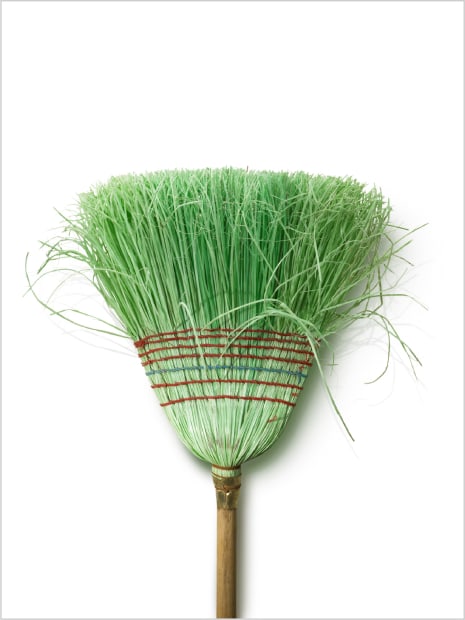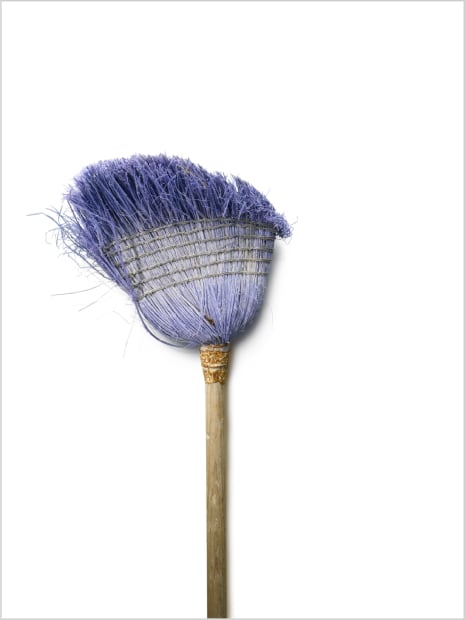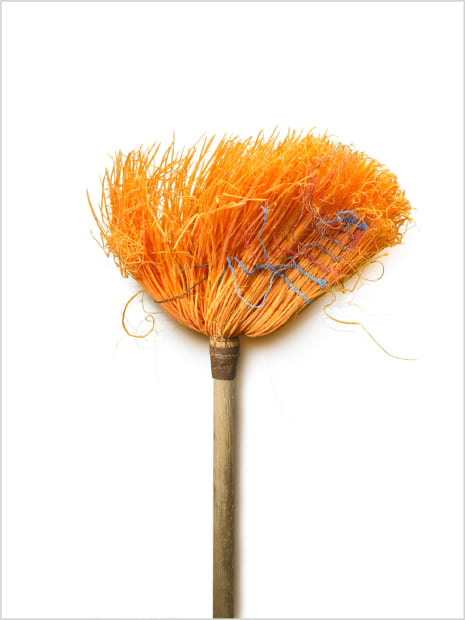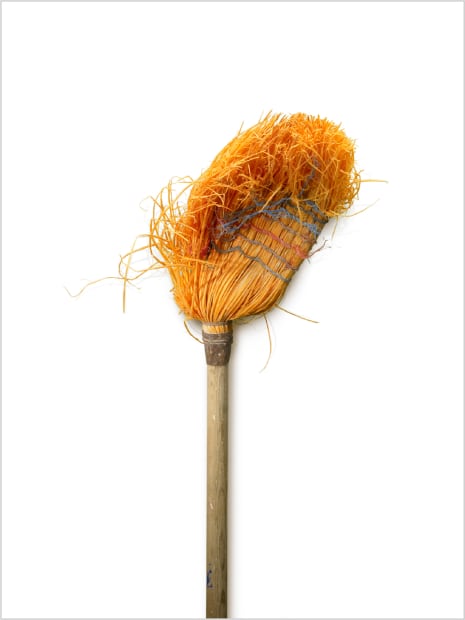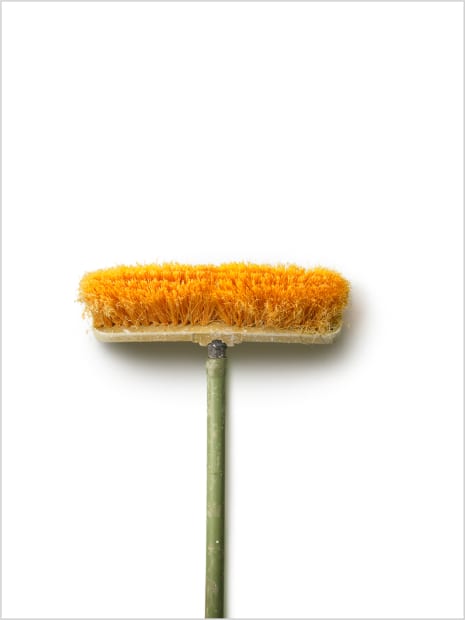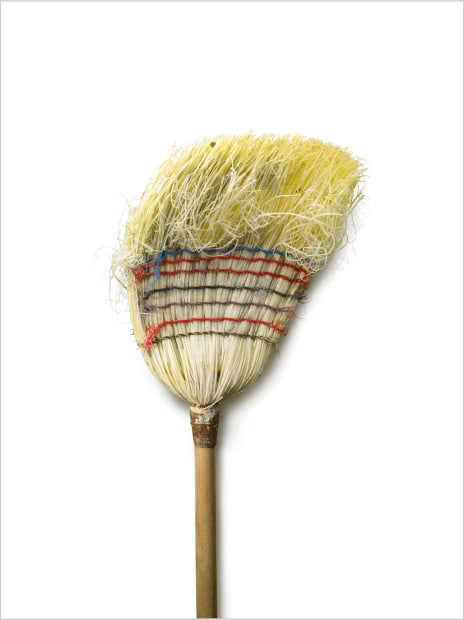"Chuck Ramirez’ Careyes and Brooms series are collections of medium-scaled photographs of brooms and paint sample bottles, respectively collected on trips to the remote Pacific coast of Mexico. Beautiful and evocative in their quirky state of disrepair, Ramirez positioned these objects vertically and centered in a white background. The brooms’ colorful plastic fibers—with the exception of a few photographed with their natural straw—resemble ragged flowers on wooden stems. One begins to notice morphologies: multiple configurations of bristles, materials and how the bristles attach to the handle and are bound into specific shapes. A squarish broom probably swept the kitchen, a wide pushbroom a shop, a flat broom cleaned bedrooms and a rounded straw broom most likely cleared the front steps. A few are uniform; others reveal a strong diagonal, with much of the bristle worn away on one side. Some splay out in a chaotic scribble.
Positioned against a neutral background, these objects take on an animistic quality. They become portraits, albeit unusual ones. The wear on the bristles create hairdos, some tight and trimmed, others messy and worn. A few are even sexy. An orange broom looks windblown with its bristle swept off to the right and its lavender binding unraveled. A blue broom missing a few rows of hairs on either side looks like a young man with a fresh buzz cut. A purple broom is punk chic, with a purple and asymmetrical shag. The paint sample bottles of the Careyes series are more modest and quietly proclaim their use and morphology. Although these photographs are humorous, the ironic juxtaposition of the pristine against the battered suggests a psychological state. Brightly colored bristles are dirty and frayed; their straight-arrow attitudes worn down or bent. Even the most erect and trimmed have dirt on their face. Slowly a sense of melancholy creeps in. One perceives the passage of time and the slow breakdown that comes with use, age and hard labor. The socio-economic positions of the brooms’ and bottles’ users hover—a frugalness spurred by poverty—each object is its user’s surrogate. People tend to anthropomorphize things and Chuck counted on this. Everyday objects say something profound about us. Funny how something so simple can point to something as large as shared humanity."
-Essay by Chris Sauter.
Positioned against a neutral background, these objects take on an animistic quality. They become portraits, albeit unusual ones. The wear on the bristles create hairdos, some tight and trimmed, others messy and worn. A few are even sexy. An orange broom looks windblown with its bristle swept off to the right and its lavender binding unraveled. A blue broom missing a few rows of hairs on either side looks like a young man with a fresh buzz cut. A purple broom is punk chic, with a purple and asymmetrical shag. The paint sample bottles of the Careyes series are more modest and quietly proclaim their use and morphology. Although these photographs are humorous, the ironic juxtaposition of the pristine against the battered suggests a psychological state. Brightly colored bristles are dirty and frayed; their straight-arrow attitudes worn down or bent. Even the most erect and trimmed have dirt on their face. Slowly a sense of melancholy creeps in. One perceives the passage of time and the slow breakdown that comes with use, age and hard labor. The socio-economic positions of the brooms’ and bottles’ users hover—a frugalness spurred by poverty—each object is its user’s surrogate. People tend to anthropomorphize things and Chuck counted on this. Everyday objects say something profound about us. Funny how something so simple can point to something as large as shared humanity."
-Essay by Chris Sauter.

